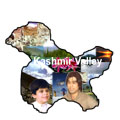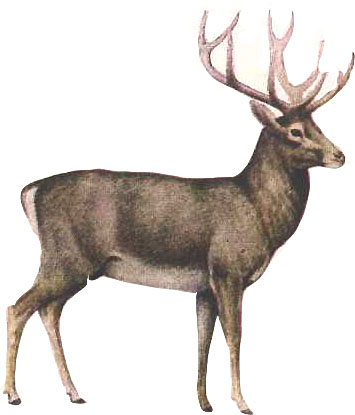 |
Kashmir Stag Cervus elaphus hanglu The State of Jammu and Kashmir, comprising three principal divisions Jammu, Kashmir and Ladakh the great diversity in the floristic climate and altitudes, resulted in an environment ideal for a rich variety of wildlife. A large number of species found in the region are peculiar to it. Jammu and Kashmir state also sustains a rich avi-faunal assemblage and offer a breeding ground to a large number of migratory species. Some of the rare and threatened birds found in the area include exotic species like, The Himalayan Golden eagle, The beavided Vulture, The Moral pheasant, the Koklas, The Himalayan Snow Cock. The state because of its location of the flyway route of migrants also has the variety of migratory waterfowls in our wetlands such as Geese, Coots and Ducks.
The red deer (Cervus elaphus hanglu) of Europe typifies a group of large deer consisting of a several species and races distributed over Europe, Asia north of Himalayas, North Africa and North America. Of the two occur within our limits, the hangul is the commoner and better known. Its coat ranges from light to dark brown, fading to dingy white on the lips, chin, under parts and buttocks. The white rumps patches does not extend much above the pale and divided by the broad median strip extending down to the base of the tail and some times to its extremity. The color fades during the summer but turns up with the denser winter coat, which in a big stag is very dark or rufous brown. Fawns are spotted. Only hinds may show the white flecks. The fine spreading antlers assume great variety of Form. Normal heads leave points on each antler It is limited to the northern side of the valley and some of the adjacent valleys. Being a forest animal, the hangul is found singly or in small parties, which seldom remain long in one area but roam from forest to forest to find good grazing. Winter is spent in lower levels, summer on the heights. After shedding their antlers between March to April most stags go up hill and congregate above the snow line. They spent the summer at an elevation of 2750- 3650 Mts. About the end of September the stags new antlers have hardened. They commence to roar and challenge. In November when dry leaves cover the ground the stag desert the hindes and go to the up land meadows or into the horse chestnut forest.
|

